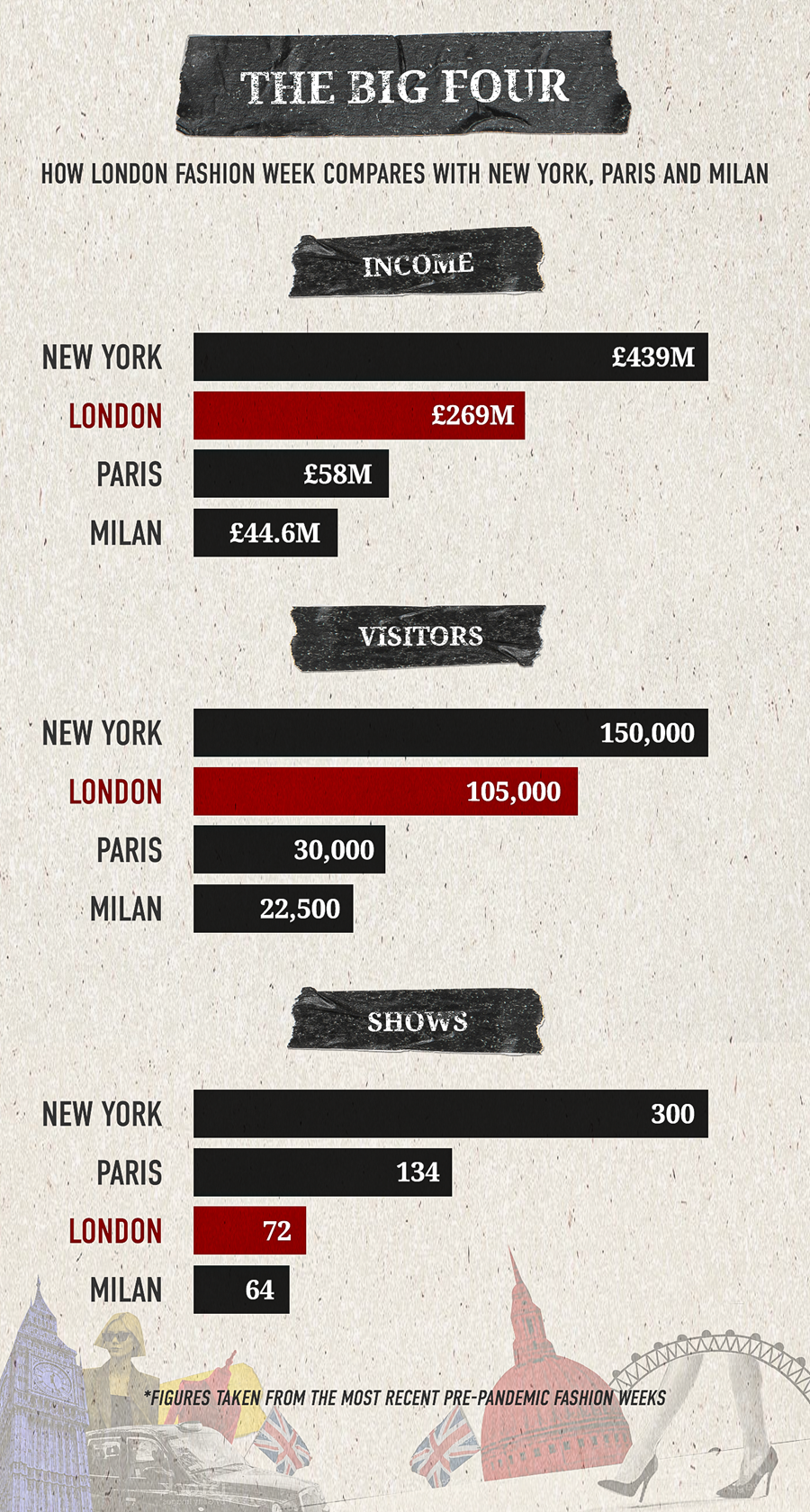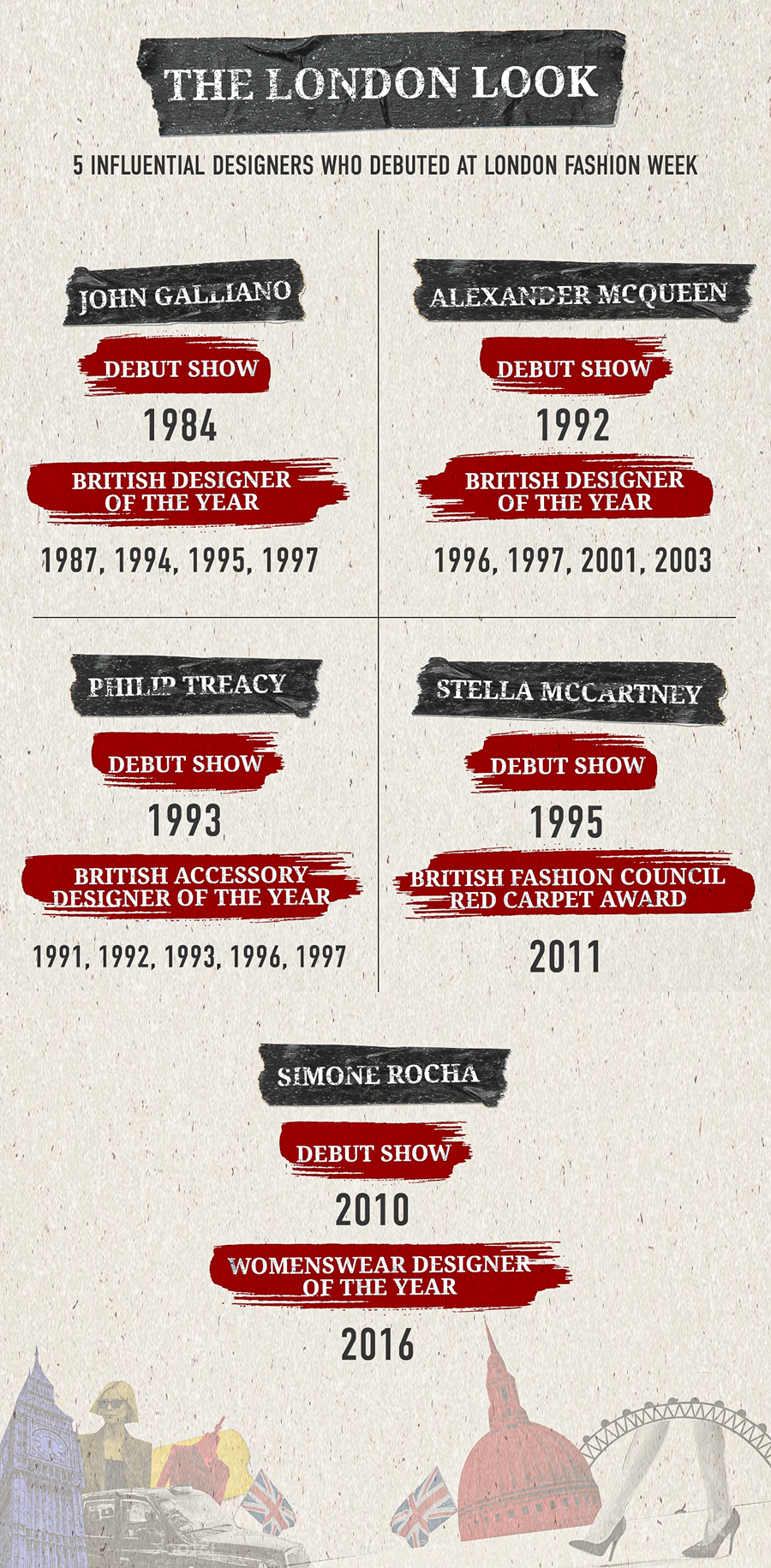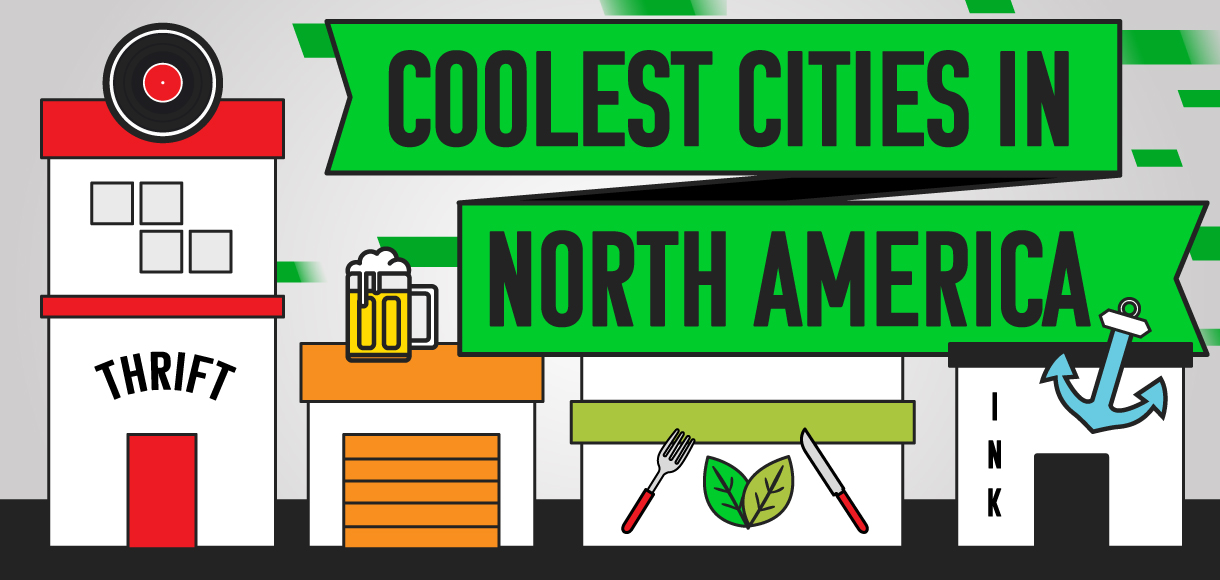Strutting its stuff: The evolution of London Fashion Week

With London Fashion Week adapting to what is now considered the new normal, we look at how the event has evolved from humble beginnings.
Strut, strut, strut. Stop, pose, turn. Strut, strut, strut.
That’s right. Catwalk season is almost upon us.
Whether you’re a model sashaying down the runway, a buyer sat in the front row of a show or a consumer simply picking out your latest outfits, fashion is big business.
It employs approximately 800,000 people and contributes £26bn to the economy each year in the United Kingdom alone, making it the country’s largest creative industry.
To put that into context, the food and drink industry provides half as many jobs and contributes £4.1bn less.
Given the financial standing of the clothing business, it makes sense that London Fashion Week is held in such high regard.
The bi-annual celebration of designers, emerging trends and creative expressionism has cemented itself as one of the most important events in the fashion calendar. With research from Betway online casino, we look into how it has evolved over the years.
Despite being the youngest of the Big Four Fashion Weeks – alongside New York, Paris and Milan – London is no less prestigious and has attracted some high-profile guests in its 37 years, including Margaret Thatcher, Princess Diana and even Queen Elizabeth II.
But compared to today’s glitzy surroundings, throngs of celebrities and big-budget presentations, the event’s origins are slightly more humble than you might expect.
Think more The Devil Wears Primark, rather than The Devil Wears Prada.

Held in February 1984, one year after the formation of the British Fashion Council, the majority of the inaugural London Fashion Week took place in a west London car park.
While there was a designer showroom space at Olympia, the main event happened on a catwalk under a tent that was erected outside the Commonwealth Institute in Kensington.
There were just 15 catwalk shows in 1984, although what the schedule lacked in quantity, it made up for in quality – among the designers showing was fashion icon Vivienne Westwood.
The event itself was considered successful enough for the British government to commit to providing funding, thus safeguarding its long-term future.
In the intervening years, the event has grown into a worldwide phenomenon that attracts designers, buyers and journalists from all over the globe.
Speaking in 2018, Vogue editor-in-chief Anna Wintour referred to the fashion scene in London as ‘wonderful and exciting’ and ‘what fashion should be about’.
It seems she’s not alone in thinking that.
More than 5,000 guests were invited to London Fashion Week in February 2020, the last pre-pandemic event, while a further 100,000 people were estimated to have visited the city during the week.
Unsurprisingly, with such an increase in numbers and greater demand, the festival has been scaled up considerably over the last 37 years.
During February 2020, there were 72 scheduled catwalk shows and presentations – nearly five times the total of 1984.
But it wasn’t just on the runway that things grew – more than 250 designers were invited to showcase their collections, with orders taken in excess of £100m.
Having outgrown the car park, London Fashion Week is now held in surroundings more befitting of high-end and luxury clientele.
For starters, it’s now mostly inside. The event is hosted in central London, with the majority of shows taking place at The Store X on the Strand.
Additional exhibits are arranged in marquees on the courtyard of Somerset House.

It’s clear to see how far London Fashion Week has come in a relatively short space of time when directly comparing it with the rest of the Big Four.
New York Fashion Week started in 1943, followed by Milan in 1958, and Paris in 1973 before London eventually joined the party in 1984.
Despite its relative youth, it brings in an estimated £269m of income to the city every season – second only to the £439m that is splurged in the Big Apple.
In terms of popularity, meanwhile, the 105,000 visitors that London Fashion Week attracts every year puts it second to New York again.
For context, an estimated 22,500 people visit Milan Fashion Week, while 30,000 make the trip to Paris in normal circumstances.
But numbers and economics are not the only metric by which it’s possible to judge the impact and evolution of London Fashion Week.
It has also been responsible for launching the careers of some of the world’s most influential designers.
This has been the case from as early as the first ever organised event, which saw the debut of five-time British Fashion Designer of the Year John Galliano.
Having recently graduated from Central Saint Martins, Galliano presented his graduate collection Les Incroyables, which was inspired by the French Revolution.
An instant hit, the entire collection was bought by Joan Burstein of Browns.
Alexander McQueen and Stella McCartney are also among the designers who have debuted at London Fashion Week.
Philip Treacy, meanwhile, has won British Accessory Designer of the Year five times and is credited with revitalising the British hat-making industry.
He first showed at London Fashion Week in 1993 and caused a stir among the press after sending a Naomi Campbell down the runway topless.
More recently, Simone Rocha – daughter of legendary designer John Rocha – has made a splash since launching her graduate collection at London Fashion Week in 2010.
Rocha was named Womenswear Designer of the Year in 2016, while her work has been worn by Kate Middleton and Michelle Obama.

Despite this undoubted success, the fashion industry and flagship events like London Fashion Week face plenty of challenges in the immediate term.
In order to survive, they are having to innovate once more.
London Fashion Week is being hosted solely online in February 2021, with the entire schedule of catwalk shows and presentations being streamed.
Collections will also be unveiled virtually and sold in digital showrooms or in one-on-one appointments.
Given its track record, though, you would be foolhardy to bet against this tweaked format being another run(a)way success.




































